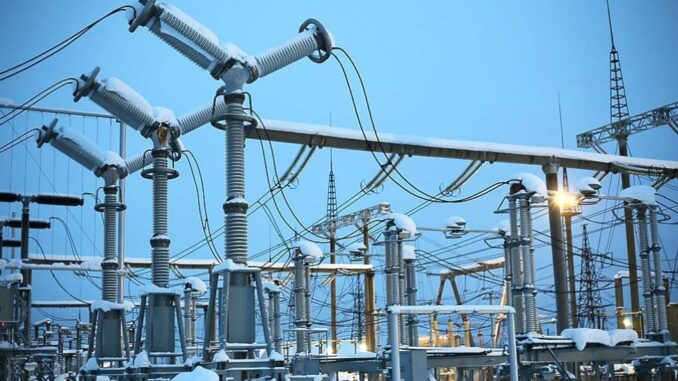
Electricity generation utilizes various sources, each with its unique technologies, benefits, and environmental impacts.
Here’s an overview of the major sources of electricity generation:








1. Fossil Fuels
Coal
Technology:
Pulverized Coal Combustion: Coal is ground into a fine powder and burned to produce steam, which drives turbines.
Integrated Gasification Combined Cycle (IGCC): Coal is converted into gas before combustion, improving efficiency and reducing emissions.
Advantages:
Abundant Supply: Large reserves in many countries.
Stable and Reliable: Provides consistent base-load power.
Disadvantages:
High Emissions: Significant CO₂, SO₂, NOₓ, and particulate matter emissions.
Environmental Impact: Mining and waste disposal issues.
Natural Gas
Technology:
Combined Cycle Gas Turbines (CCGT): Uses both gas and steam turbines to improve efficiency.
Open Cycle Gas Turbines (OCGT): Simpler and cheaper but less efficient.
Advantages:
Lower Emissions: Produces less CO₂ and pollutants compared to coal.
Flexible: Can quickly adjust output to match demand.
Disadvantages:
Price Volatility: Subject to fluctuations in natural gas prices.
Methane Leaks: Methane is a potent greenhouse gas.
Oil
Technology:
Oil-fired Boilers and Turbines: Burns oil to produce steam or directly drive turbines.
Advantages:
High Energy Density: Produces a large amount of energy per unit.
Transportable: Can be transported easily compared to gas.
Disadvantages:
High Cost: More expensive than coal and natural gas.
Environmental Impact: High CO₂ emissions and oil spill risks.
2. Nuclear
Technology:
Pressurized Water Reactors (PWR): Uses water under high pressure as a coolant and moderator.
Boiling Water Reactors (BWR): Boils water to produce steam directly in the reactor vessel.
Advantages:
Low Greenhouse Gas Emissions: Minimal CO₂ emissions during operation.
High Energy Density: Large amounts of energy from small amounts of fuel.
Disadvantages:
Radioactive Waste: Long-lived waste requiring secure storage.
High Capital Costs: Expensive to build and maintain.
3. Renewable Energy Sources
Solar
Technology:
Photovoltaic (PV) Cells: Convert sunlight directly into electricity.
Concentrated Solar Power (CSP): Uses mirrors to concentrate sunlight to produce steam and drive turbines.
Advantages:
Low Operating Costs: Minimal fuel and maintenance costs.
Scalable: Can be deployed at small or large scales.
Disadvantages:
Intermittent: Dependent on sunlight availability.
Land Use: Requires significant space for large-scale installations.
Wind
Technology:
Onshore Wind Turbines: Installed on land.
Offshore Wind Turbines: Installed in bodies of water, typically larger and more efficient.
Advantages:
Low Operating Costs: Minimal fuel and maintenance costs.
Renewable: Sustainable and abundant.
Disadvantages:
Intermittent: Dependent on wind availability.
Visual and Noise Impact: Can affect local communities and wildlife.
Hydropower
Technology:
Run-of-River: Generates power from flowing water without significant storage.
Reservoir (Dam): Stores water in a reservoir to generate power on demand.
Advantages:
Reliable: Provides consistent base-load power.
Low Emissions: Minimal greenhouse gas emissions during operation.
Disadvantages:
Environmental Impact: Displacement of communities and wildlife, alteration of ecosystems.
High Initial Costs: Expensive to build dams and reservoirs.
Biomass
Technology:
Direct Combustion: Burns organic materials to produce steam and drive turbines.
Anaerobic Digestion: Converts organic waste into biogas for combustion.
Advantages:
Renewable: Sustainable if sourced responsibly.
Reduces Waste: Utilizes agricultural and industrial waste.
Disadvantages:
Emissions: Releases CO₂ and other pollutants.
Land Use: Requires significant land for growing biomass crops.
Geothermal
Technology:
Dry Steam Plants: Use steam from underground to drive turbines.
Flash Steam Plants: Convert high-pressure hot water into steam.
Binary Cycle Plants: Transfer heat from geothermal fluid to another fluid that drives turbines.
Advantages:
Reliable: Provides consistent base-load power.
Low Emissions: Minimal greenhouse gas emissions during operation.
Disadvantages:
Geographical Limitations: Limited to areas with geothermal activity.
High Initial Costs: Expensive to drill and develop geothermal sites.
Conclusion
Electricity generation involves a variety of sources, each with its own advantages and disadvantages. The choice of energy source depends on factors such as resource availability, environmental impact, cost, and energy needs. Transitioning to cleaner and more sustainable energy sources is crucial for mitigating environmental impacts and addressing climate change.

Leave a Reply